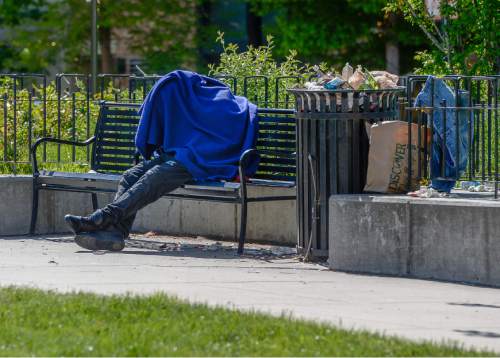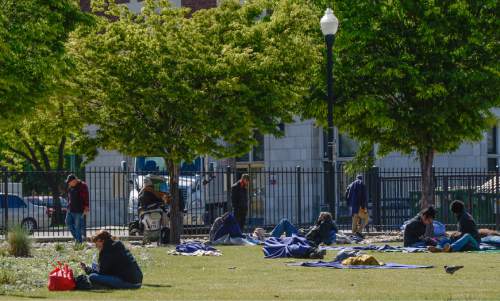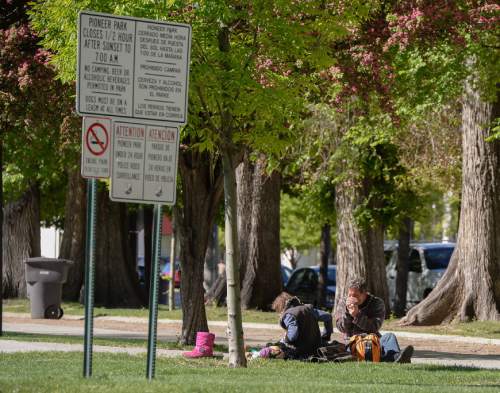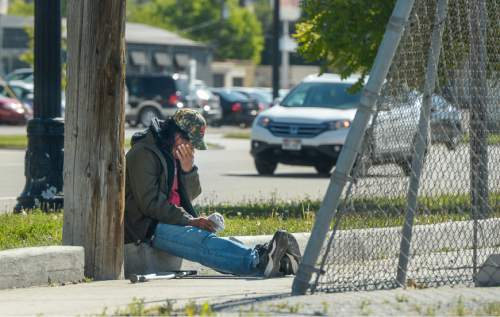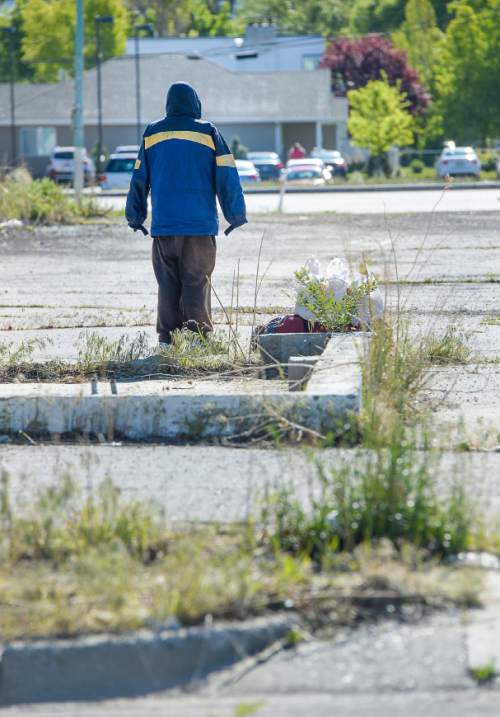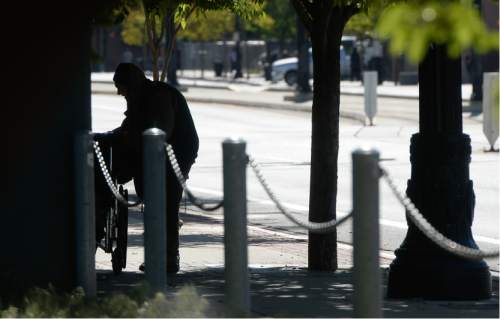This is an archived article that was published on sltrib.com in 2016, and information in the article may be outdated. It is provided only for personal research purposes and may not be reprinted.
While Utah boasts that it has one of the hottest economies in the country, homelessness still increased here by 7 percent last year.
And the number of homeless families jumped by 17 percent, according to data the state released Wednesday.
"The recovery still needs to reach the very bottom of our society," said Tamara Kohler, assistant director of housing and community development for the Utah Department of Workforce Services.
The state released two sets of data looking at the homeless.
Its Homeless Management Information System collects data by individual names (to prevent double counting) of people who use emergency shelter or transitional housing services during the year, or some outreach medical and food services.
It found that 13,114 people experienced homelessness last year, up from 12,241 the previous year. However, state officials estimate it counts only about 80 percent of all the homeless in the state because some private shelters do not participate in its data gathering, and some homeless people avoid shelters.
That data set also said the number of families that experienced homelessness rose from 4,126 to 4,832.
While most of the homeless are found in Salt Lake County, most of the increase is coming elsewhere.
The state reported a 1.6 percent bump in homelessness in Salt Lake and Tooele counties, for a total of 9,001 people. It reported a 24.6 percent spurt in Utah, Wasatch and Summit counties, with a total of 1,443 people experiencing homelessness there.
Elsewhere in Utah, homelessness shot up by 19.9 percent, including a total of 2,670 individuals.
Kohler said that set of data probably gives the most accurate picture of Utah homelessness, but the state also conducts — as required by the federal government — a "point in time" count of all the homeless people it can find on one night in January.
That "point in time" count actually found 7 percent fewer homeless people this year— 2,807, down from 3,025.
Kohler said that number may vary depending on the weather and the cold, and also decreased in part because of some new federal definitions of what previously was considered transitional housing that now is considered permanent.
The state is confident that homeless numbers are increasing because of its yearlong measurement of the use of shelters and services.
Salt Lake City officials and others lobbied the Legislature to address the problem of homelessness, persuading lawmakers to appropriate $9.25 million, with much of it destined to pay for better transitional housing, more shelters and services.
Kohler said the numbers show that many people struggle to afford and maintain housing.
"We know that rents are increasing. We know that we have a profound need for more affordable housing," she said. "It's a very tight rental market, too," in which many poorer people often compete for the same affordable apartment, leaving some out.
She said the exact reasons for homelessness vary from case to case, but "a significant number of safety nets have to fail for a family to become homeless. Most of us, if we have adult children, would take them in if they lost their job," for example.
Still, the numbers offer some hope. She said most people are homeless only briefly, and 80 percent "exit the system and never come back," at least in the short term.
State data say the median time for being homeless in the state — the midpoint if all such people were lined up from longest to shortest times — is 17 days. However, the average is 50.8 days, because some people have been homeless for long periods and stretch out that average.
The number of chronic homeless remained fairly flat. That is defined as someone who has been homeless for a year, or had four episodes of homelessness over three years that adds up to a year total, and have a diagnosed disability.
"Last year, it was 178 people. This year it is 168," Kohler said, noting Salt Lake City and the state have worked hard to reduce chronic homelessness — including providing housing and counseling to help obtain jobs.
"We certainly made great strides, especially with chronic homelessness, and now we need to apply the lessons that we've learned to other groups, like families," said Lt. Gov. Spencer Cox, who heads the Homeless Coordinating Committee, which will decide how to use newly available money to help the homeless.
The statistics were presented to that committee Wednesday to help guide its decisions.
"We want to be wise in how the conversation moves forward on that," Kohler said. "We want to look at changing how services are delivered. We want to look at how we make an impact above and beyond what we have been doing in the past."


